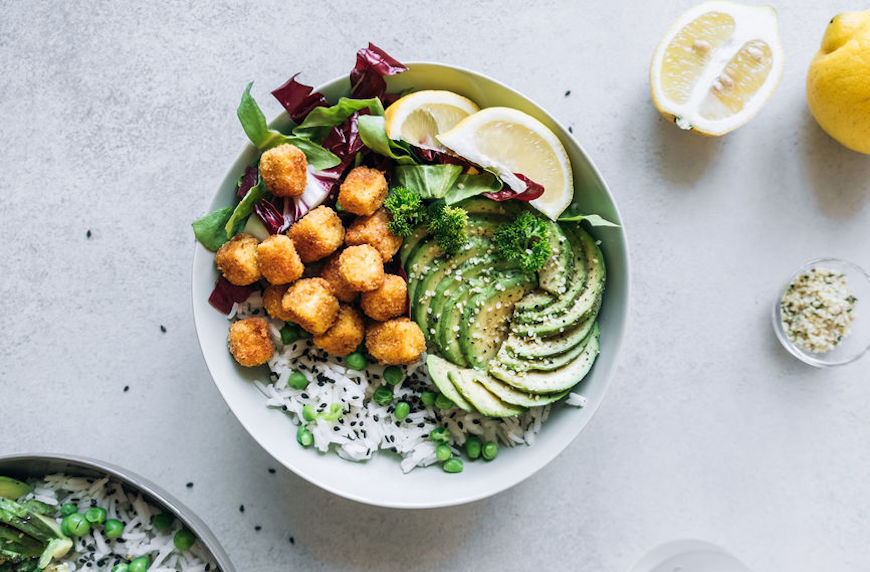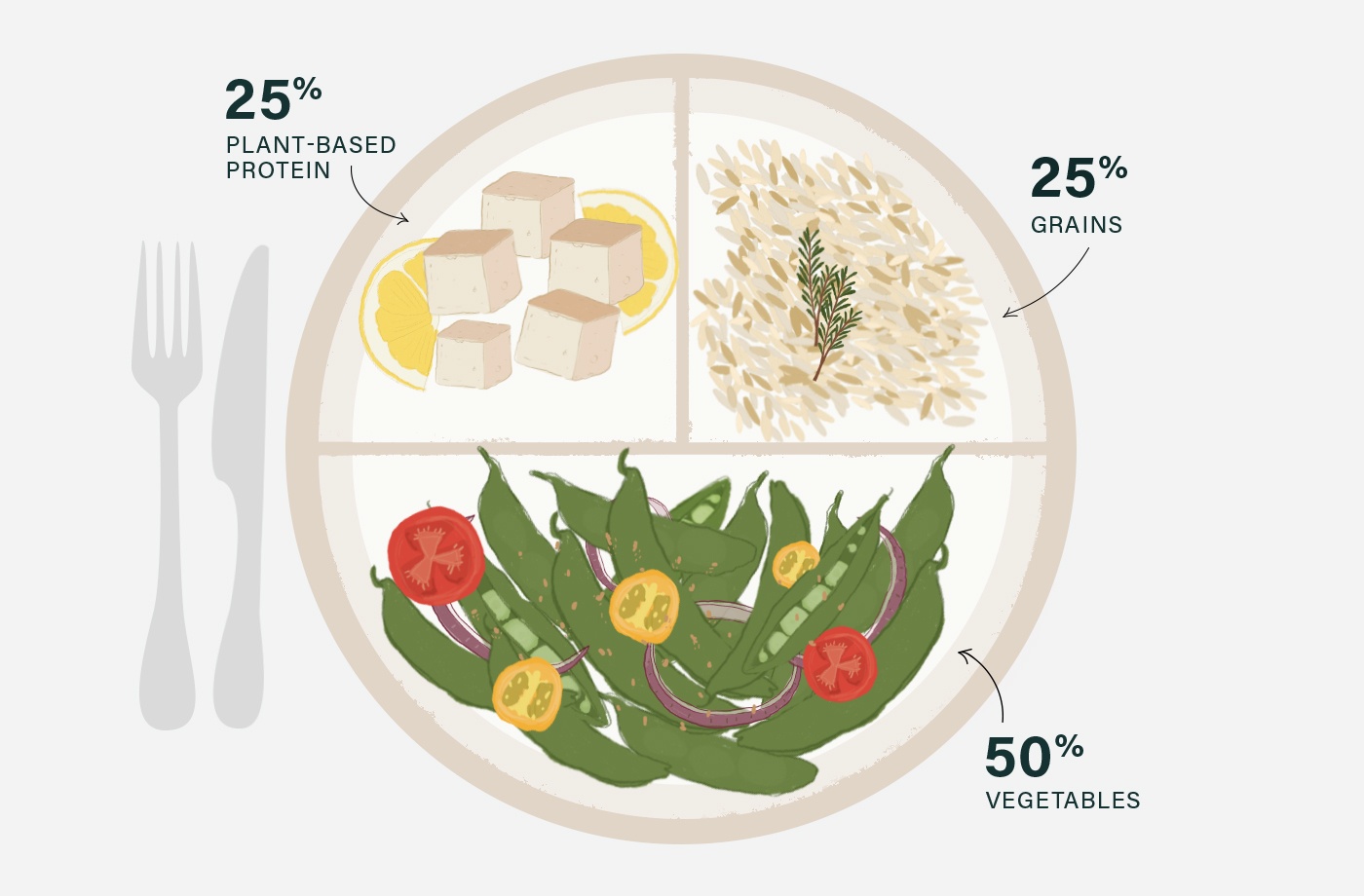
August 12, 2019 at 04:00AM by CWC
We called it: 2019 is truly the year of plant-based eating. The products have never been better, and given people’s growing awareness of the food industry’s outsized impact on climate change, many are finding that the time is right to make the switch (or gradually transition into) a vegan diet.
However, the restrictions inherent to a vegan way of eating can make it daunting for some. “Veganism excludes all animal products—meat, dairy, eggs, fish, seafood and even honey,” says Seattle-based Ginger Hultin, RD, spokesperson for the Academy of Nutrition and Dietetics. But there are proven benefits, says Natalie Rizzo, MS, RD. “Vegan diets seem to offer protection for obesity, hypertension, Type 2 diabetes, and death by heart disease,” she says.
To it off pull off in a healthy way, Rizzo says people need to be smart about eating a well-balanced diet filled with fruit, vegetables, beans, legumes, whole grains, nuts, and seeds. And it requires being smart about the right vegan macros intake to ensure you’re getting enough protein, iron, B vitamins, and good fats, which typically are more easily available in animal foods.
ADVERTISEMENT
ADVERTISEMENTKate Spade Autumn/Winter Sale |
Not sure how to build that vegan plate? Here’s what a well-balanced meal looks like on a plant-based vegan diet that eliminates meat, dairy, and eggs.

Start with at least half of a plate’s worth of veggies
Obviously, a vegan diet involves a lot of vegetables, and some of them may also count for your carbs or proteins. But in general, half of your plate should be made up of non-starchy veggies, especially leafy greens. (You can also include fruit here, but don’t make half a plate all fruit.)
“Vegetables and fruit are important because they contribute fiber, vitamins, minerals, and antioxidants to the diet, but they’re low in calories and high in water content,” says Hultin. “There are many types of veggies to choose from but the guidelines suggest choosing a variety of colors: green, white, orange and red,” she says. Think bell peppers, cauliflower, onion, tomatoes, and green vegetables as falling into this category.
Add whole grains and starchy vegetables for carbs
Up to a quarter of your plate should be dedicated to carbs on a vegan diet. Carbs provide energy and nourishment on a vegan diet, so pairing them with some protein, healthy fats, and greens will make for a balanced meal. These would be complex carbohydrates (such as whole grains, legumes, or starchy veggies) as they are high in fiber, vitamins, minerals, and antioxidants, says Hultin. Instead of white rice and white flour pasta, for example, opt for a chickpea or whole wheat pasta (here are some of the best ones for your easy reference), brown rice, quinoa, or other ancient grain of choice.
Prioritize plant-based proteins from whole foods sources
The remaining fourth of your plate should consist of plant-based protein sources. “There are a few options, but usually the highest source of protein is anything soy-based, meaning tofu, tempeh or edamame,” says Rizzo. “Lentils are also really high in protein.” (Here’s a list of some of the best plant-based meat alternatives.) There are certainly lots of buzzy fake meat options these days, but given their nutritional profile (and inherently processed nature), those are best saved for
Looking for more great vegetarian and vegan proteins? Check out this dietitian’s ranking of her faves:
One thing to remember: The majority of plant-based proteins (some exceptions include quinoa, soy, hemp, and chia) are not considered complete, says Rizzo. “There are two types of protein– ‘complete protein’, which contains the nine essential amino acids—which the body cannot make—and ‘incomplete protein’, which does not have all nine amino acids,” she says.
That’s why it’s key for vegans to pair different plant-based proteins to make complete proteins, says Rizzo, which will guarantee you’re getting your fill of all of the essential amino acids your body needs with each meal. Here are some suggestions from Rizzo:
- Beans and brown rice
- Nut butter and whole grain bread
- Lentil and barley
- Hummus and pita
- Oats and almonds
However, Hultin says you don’t need to be concerned with getting exact pairings at every single meal—you won’t become deficient. “The body stores amino acids to use when needed so actually, it’s not hard at all to get enough,” she says. If you eat enough protein from a wide variety of sources throughout the day, you should be good to go.
What does a sample plate look like?
Need some inspiration? Rizzo suggests trying a half-cup of cooked lentils paired with one cup of your favorite roasted vegetables and two cups of kale salad topped with your favorite healthy salad dressing. Or you could cook up three to five ounces of tofu (have you tried air-frying it?) and pair it with a cup of green beans and a half-cup of cooked brown rice. Despite the diet being restrictive, the potential combinations are endless.
ADVERTISEMENT
ADVERTISEMENTSports Direct Free Delivery on All Orders! |
If you need more vegan meal inspo, check out these delicious vegan Instant Pot recipes or this delicious vegan brownie recipe.
Author Isadora Baum | Well and Good
Selected by CWC
ADVERTISEMENT
ADVERTISEMENTUp to 30% off Gift Sets |






